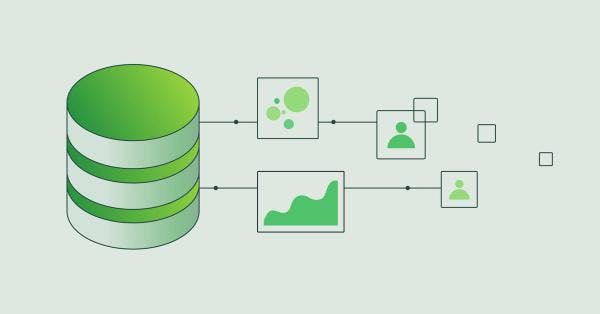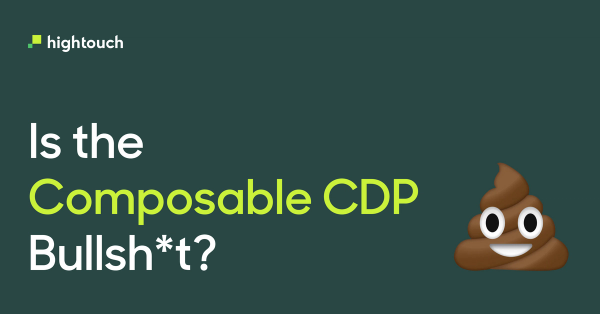It's Time to End the Build vs Buy Debate.
How the rapid adoption of composability changes the age-old Build vs Buy debate

Alec Haase

Dio Favatas
November 8, 2023
10 minutes

Marketing and data teams have long been entangled in an endless tug-of-war of build vs. buy, torn between building custom technology solutions from scratch or opting for off-the-shelf products. The choice has always been a trade-off— with data and engineering teams pushing for complete control, security, and customization by building in-house solutions while marketers long for the speed and cost-efficiency of buying packaged products.
But composability is reshaping this age-old build vs buy debate. In fact, it's throwing it out the window altogether as it introduces a third way, offering the best of both worlds. With composable solutions, organizations can now unlock the flexibility, security, and customization that was once only accessible by building in-house - all without the extensive operational and capital expenses that often plagued the build route. Thanks to the emergence of composable solutions, the notion of being trapped in a binary choice between building and buying technology has quickly become a thing of the past.
In this blog, alongside Dio Favatas, Head of Identity and Marketing Clouds at Tredence, I'll explore how composability radically changes enterprise marketing and data stacks and why everyone from CMOs to CTOs, engineering leaders, and technology consultants needs to pay attention. We'll dive into the major role of the cloud data warehouse, the benefits of modular and interoperable solutions like the Composable CDP, and the agility that composability brings to organizations today.
The Emergence of Composability
Composability is all about the flexibility to mix and match software components to craft a tailored solution. Much like constructing with Lego blocks or adhering to the principles of microservices architectures, composability is a departure from the notion that you must acquire everything from a single vendor, emphasizing the selection of individual products that complement each other.
What is so nice about more of a composable architecture is you don't have to have this all-or-nothing approach. You can have both and make it all work together nicely.
Natalie Miles
Head of Martech
•
Chime
In the context of data and marketing technology, composable solutions are typically API-first, meaning they are designed to be easily connected to other solutions. This interoperability allows organizations to create technology stacks tailored to their specific needs without worrying about the vendor lock-in that comes with selecting entire platform solutions like Salesforce, Adobe, SAP CX, etc.
With tens of thousands of SaaS products available in the market, teams can now utilize these API-first tools to curate their stacks, selecting the best tool for right now and easily incorporating or exchanging components as their needs evolve.
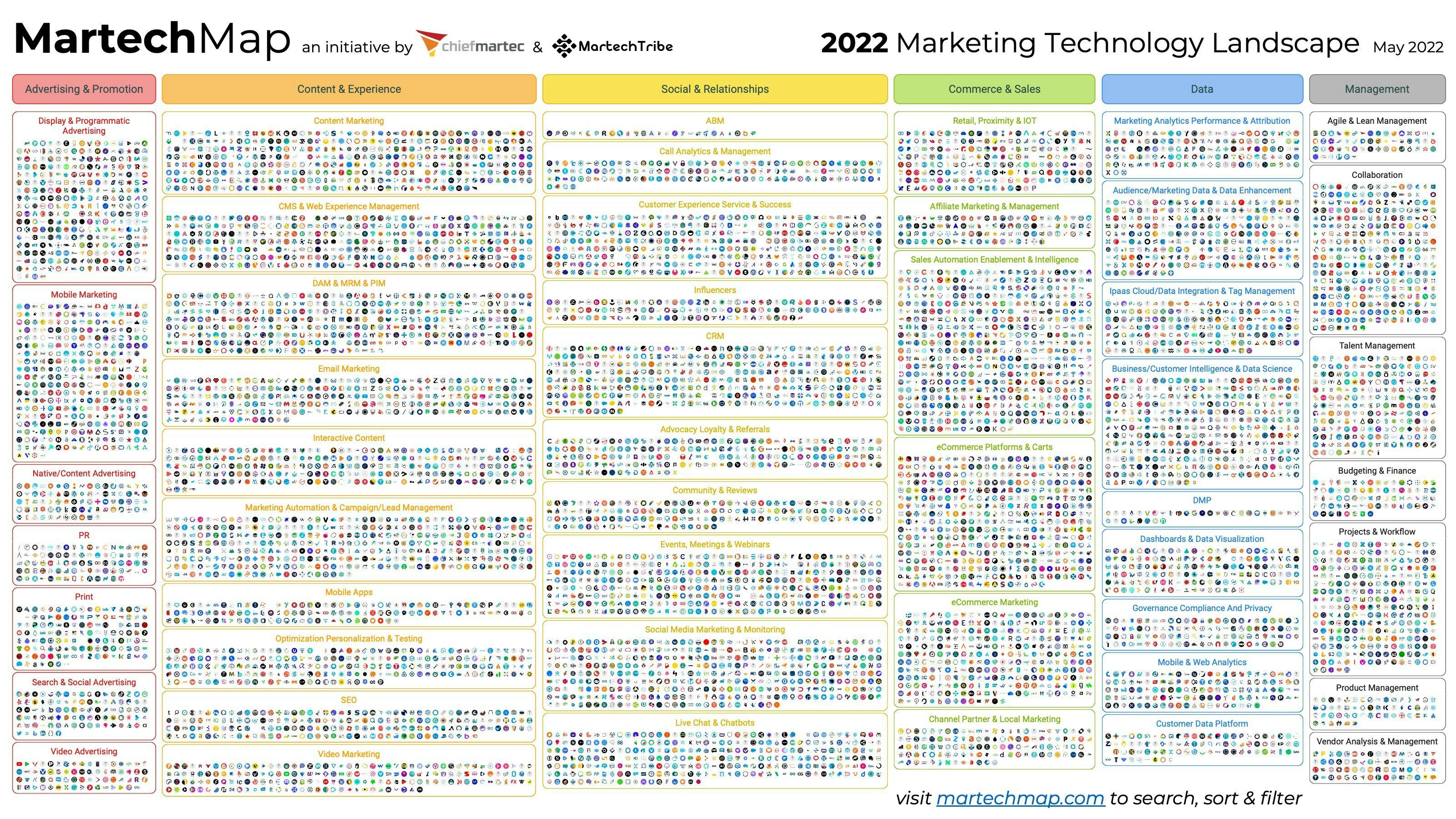
Source: https://chiefmartec.com/
The Role of Cloud Data Warehouses in Composability
To deeply understand composability, one must first understand the role of the cloud data warehouse. Market leaders like Databricks, GCP, Snowflake, and AWS have built enterprise-grade cloud offerings that offer data storage for the masses. Never before have organizations had such easy access, implementation, and management of solutions designed to handle vast amounts of data with such remarkable scale, performance, and ease. This development coincides with the rise of the "data as a differentiator" culture within organizations, where data remains a critical item on the C-suite agenda and plays a central role in decision-making.
The warehouse is a driver of composability because it provides the foundation that you build or buy modular components on top of. Before the cloud data warehouse, composability was much less feasible because storage came bundled in each individual platform (ex., CDPs) with little interoperability - leaving you to either buy all-in-one tools or build everything on your own.
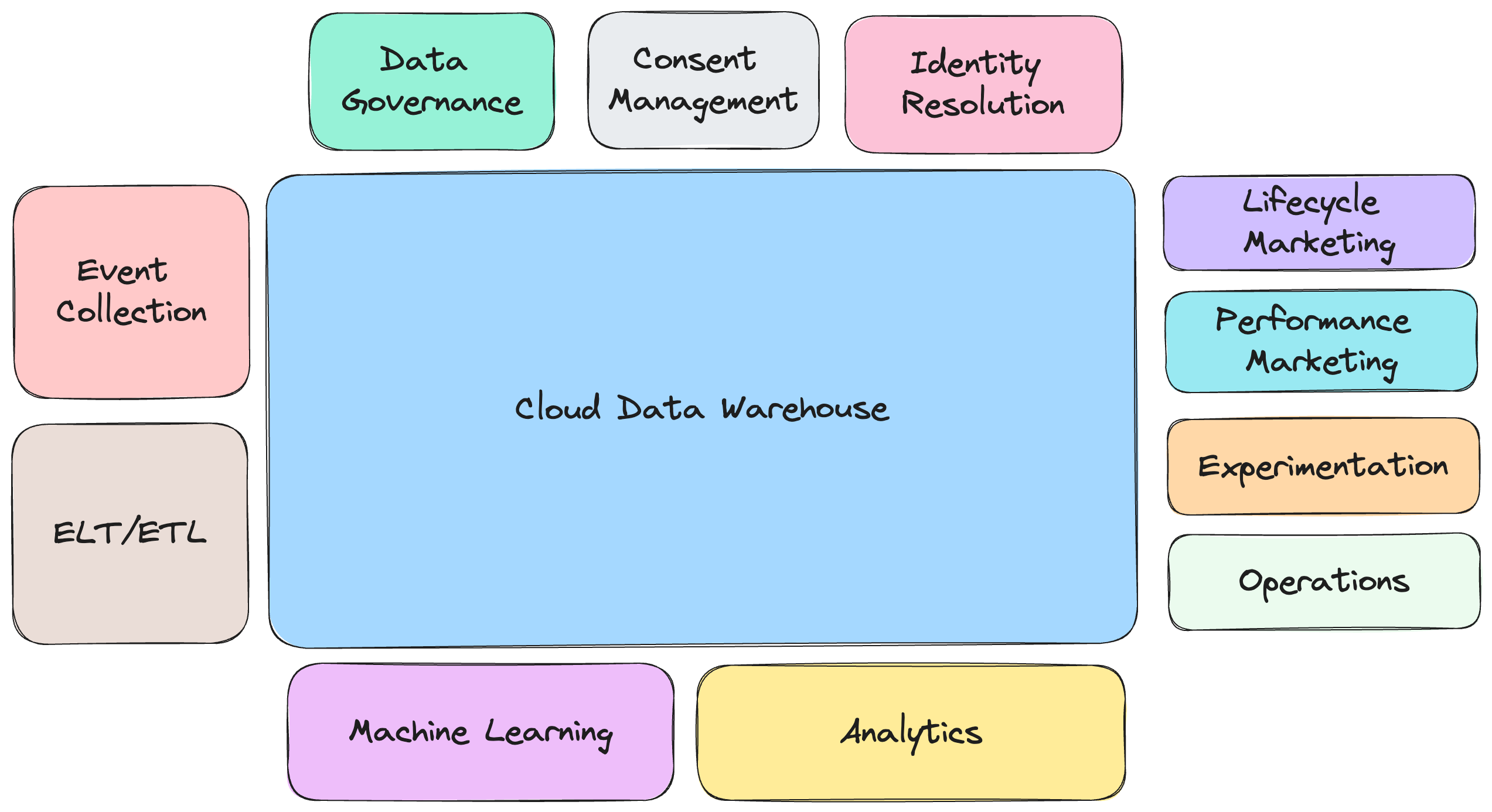
The CDW acts as the core of modern marketing and data stacks
Today, the cloud data warehouse sits at the core of modern marketing and data stacks. It grants organizations complete control over their underlying data infrastructure, a feature that once made the "Build" approach attractive to IT and data teams. These warehouses can be enhanced with Machine Learning and enrichment capabilities, creating valuable differentiation at the heart of an organization's technology stack.
As the core pieces of data infrastructure continue to mature, consolidation is happening on the backends toward data warehouses and event-driven architectures. These composable and adaptive backends enable a new wave of interaction on top of shared data models, which makes the collection, analysis, and dissection of customer data much more tenable and shareable across different teams.
Jennifer Li
Partner
•
a16z
Building: Reinventing the wheel
Historically, organizations emphasizing ownership of their data infrastructure often found themselves on the "build" side of the age-old build vs buy debate. Over and over again, embarking on the path of building applications like Customer Data Platforms (CDPs) from the ground up, ignoring the countless readily available products in the market offering far superior similar functionality.
A culture deeply rooted in building technology, especially among engineering teams, often drove this choice. Entire careers in technology have been defined by developing in-house solutions rather than purchasing readily available (and often more performant) off-the-shelf software. The mantra was usually, "Because we want to own our own destiny."
This approach, however, presents a series of challenges. Build-heavy organizations often become trapped in a costly cycle of reinventing existing solutions, ending up with subpar products compared to what's available in the market. This inclination to build can be an entrenched mindset resistant to change.
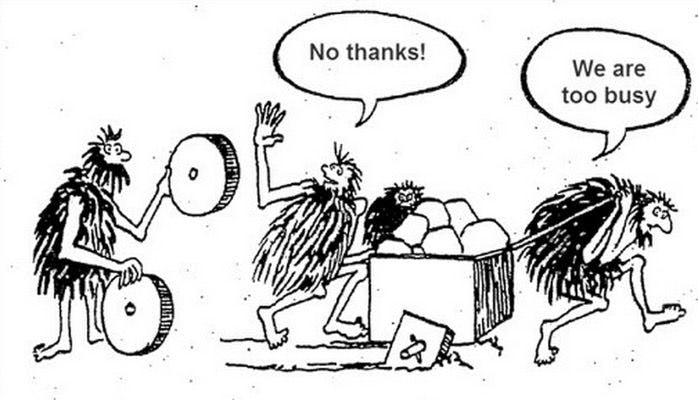
Reinventing the Martech wheel
Embracing composability offers a way forward. It enables companies to redirect their resources away from rebuilding existing tools and towards adopting best-in-class, purpose-built products. This shifts the focus towards developing capabilities and products that truly differentiate them.
With composable solutions, businesses can now strategically combine purchased and built components atop their cloud data warehouse, creating a custom stack that aligns perfectly with their needs today and positions them for success in the future. Composability provides a clear path for engineering and marketing leaders alike to escape the cycle of reinvention, allowing their teams to thrive in a world where security, flexibility, and speed are paramount.
Buying: The not-so-sweet suites
While the idea of all-in-one marketing suites promises convenience and a unified user experience, these monolithic solutions bring their own share of challenges that have historically made the "buying" route less than ideal.
One major challenge with all-in-one suites is the need to create yet another store of customer data in a third-party system, opening the door to security risks and duplicate storage costs. Furthermore, these pre-packaged solutions lack customization, tying organizations to a single vendor's ecosystem severely limiting flexibility and adaptability over time.
Although they may seem cost-effective compared to in-house development initially, they can quickly become a financial burden. Businesses may end up paying for unused features and grappling with integration problems that create data silos. To make matters even worse, these suites tend to lag in adopting new technologies, leaving organizations at a disadvantage as they await updates to catch up with the broader market.
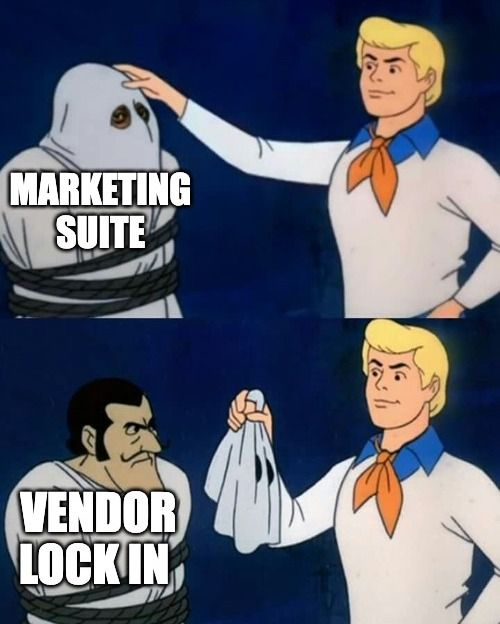
The not-so-sweet marketing suites
In contrast, composability addresses these challenges by allowing organizations to select and integrate the best individual tools for their specific needs and evolve their stack as time goes on. The composable approach promotes agility, avoids vendor lock-in, and empowers organizations to work with flexible and tailor-made solutions. It offers a way to enjoy the benefits of buying solutions while avoiding the pitfalls of one-size-fits-all marketing suites.
By adding functionalities as the need arises, businesses can leverage the strengths of each tool while also minimizing the overall cost, risk of vendor lock-in, and rigidity of an off-the-shelf solution.
Ward Rushton
Martech Consultant
•
evolv
The Composable CDP
Nowhere is the impact of composability more profound than in the Customer Data Platform (CDP) space. Traditional CDPs lock organizations into costly contracts, force predefined data schemas, and create yet another silo of customer data. Often, the desire to avoid this duplicate store led organizations to recreate the wheel once again and build internal CDP solutions.
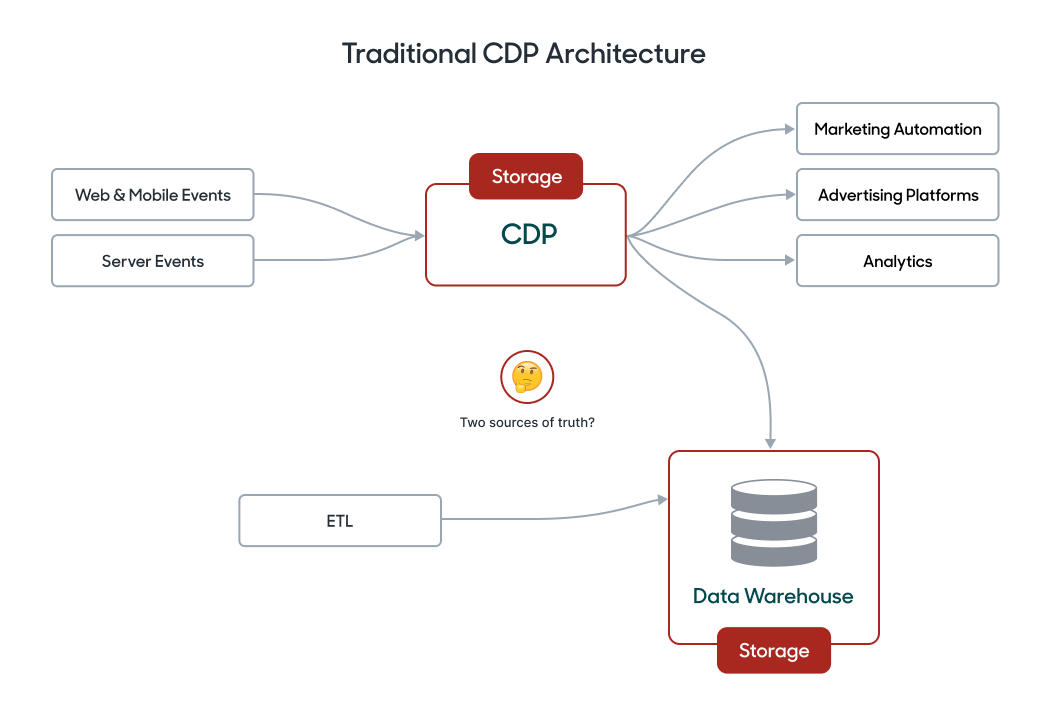
The flawed architecture of Traditional CDPs
Recognizing the opportunity to allow organizations to own their data infrastructure while strapping on best-in-class, modular components like event collection and audience building on top of the data warehouse, composable solutions like Hightouch have emerged.
The Composable CDP works harmoniously with your existing data infrastructure. Rather than storing a separate copy of your data, it leverages your organization's data warehouse as the foundational storage layer. It offers modular and best-in-class capabilities that are each purpose-built to work with your underlying data warehouse and enable marketing teams to orchestrate audiences to over 200 marketing and advertising destinations.
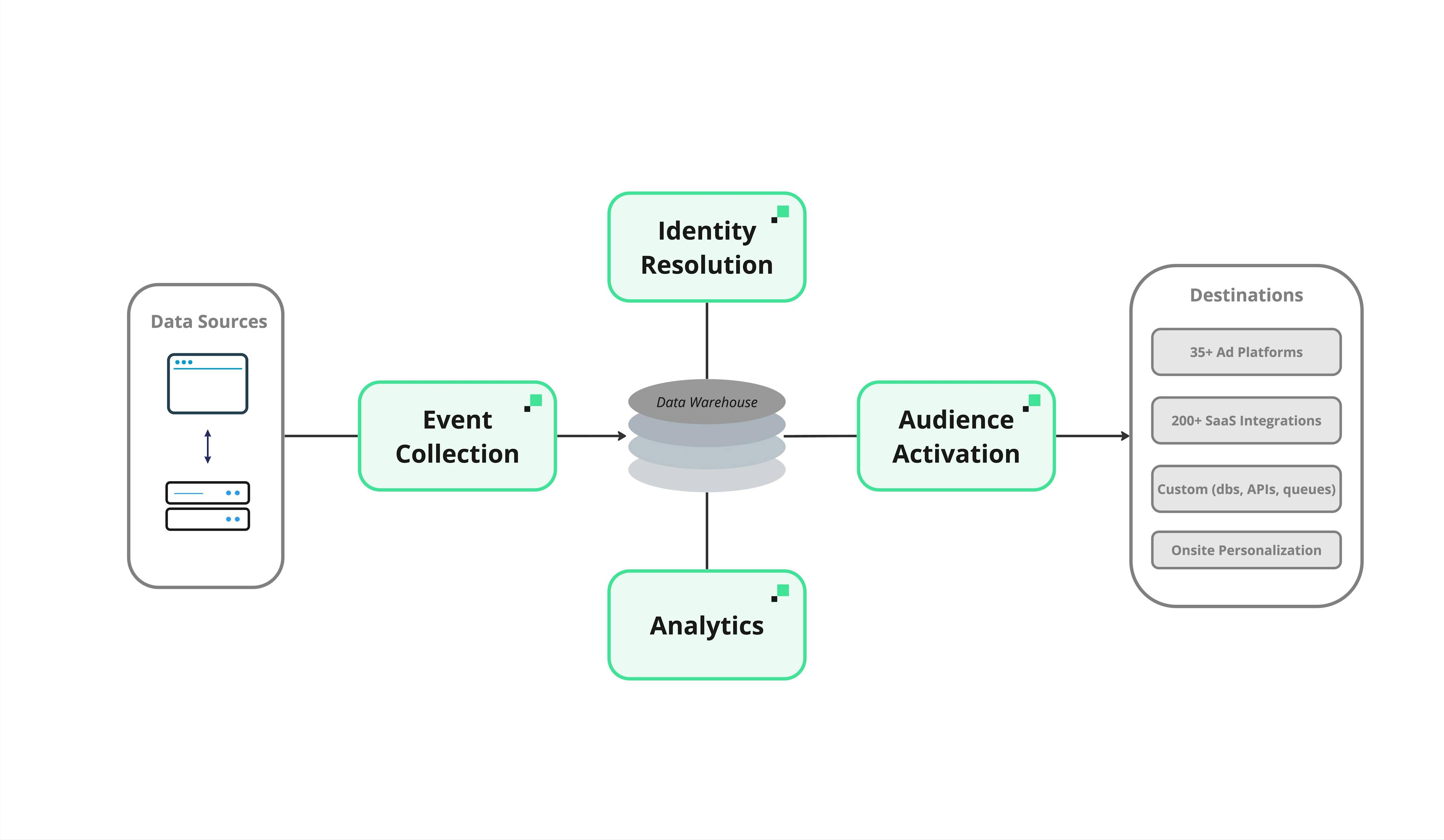
Composable solutions like Hightouch offer modular and interoperable components that center on the data warehouse
You may be asking at this point, why should I care? What makes the Composable CDP so different? There are a few significant reasons that this is such a game-changer:
- The Composable CDP runs on your data infrastructure. The Composable CDP operates within your existing data infrastructure and does not create a secondary copy of your data. Your organization already has data storage (your data warehouse), which should be the underlying storage layer that powers your CDP use cases.
- The Composable CDP is schema-agnostic. Unlike CRMs that revolve around contact lists or CDPs that revolve around web events, the data warehouse and, thus, Composable CDPs have no limitations or opinions on how data should look. You can orient and activate around anything—households, pets, bank accounts—whatever makes sense to your business.
- The Composable CDP is modular and interoperable. Every enterprise has some data infrastructure (like event collection, ETL, dashboards, etc.) before deciding to buy a CDP. The Composable CDP works with what you already have and then fills in any gaps in capability that you need. You shouldn't have to tear down and rebuild your entire house just because you want to renovate the kitchen. As you evolve, this same flexibility lets you swap out components over time, reducing the risk of vendor lock-in.
- The Composable CDP has unbundled pricing. You only pay for the capabilities you use—not the shelfware that comes with the platform.
The adoption of the Composable CDP by companies like Chime, The Zebra, Warner Music Group, Bol, and PetSmart exemplifies this rapid and broader shift to embrace composable architectures. In choosing composability, these organizations unlock unmatched flexibility and security while fueling marketer efficiency. Each has decided to transform the outdated build vs. buy debate into a celebration of the best of both worlds.
Conclusion
The customer data ecosystem is changing rapidly to embrace composability thanks to the cloud data warehouse. This shift challenges the old build vs. buy debate, offering modern organizations the best of both worlds. Companies can now create tailored solutions by combining modular components, avoiding the need to reinvent the wheel. Innovative new architectures like the Composable CDP bring these principles to life.
We urge businesses to look at their current customer data strategies and explore the possibilities of composability. It's no longer a question of build vs buy but rather how much to embrace composability to unlock more flexibility, efficiency, and a new competitive edge.
The future of composability is bright - and we are just getting started.
Thank you to Dio Favatas (Head of Identity and Marketing Clouds at Tredence) and Bharath Krishnamachari (Head of Product Analytics and Experimentation at Delivery Hero) for contributing to this piece.

